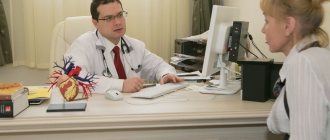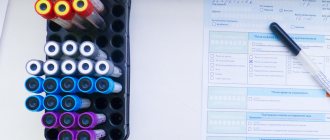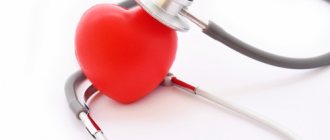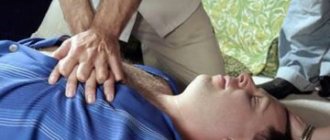Since ancient times, among folk recipes, the properties of some plants to treat people with edema and “weak hearts” have been known. Official medicine calls this condition heart failure. Modern scientific research has proven that the pathology is associated with a lack of energy capabilities of myocytes, the cells responsible for the contraction function, due to significant metabolic disorders.
Cardiac glycosides are a group of substances isolated from plants that are related in structure and mechanism of action. They are used to restore normal contractions during cardiac systole and create sufficient rest during diastole.
Emergency medications have been created in ampoule form for home use (drops and tablets). Medicines from the group of cardiac glycosides can be purchased in the pharmacy network only with a doctor's prescription, because they are potent, their prescription requires a deliberate decision and clear instructions for use.
Which plants contain glycosides?
In all climatic zones there are plants that have the properties of cardiac glycosides. In central Russia, May lily of the valley, spring adonis, various types of foxgloves, and jaundice grow. In warm countries, the shrubby harg, the Greek honeybee, has settled. Oleander grows quietly at home. Strophanthus is native to Africa. Previously, they were not treated with it, but were lubricated on arrow tips and used as an additional damaging factor in tribal wars.
Nowadays, special farms are engaged in the cultivation of medicinal plants. Artificial conditions are created for them. The level of nutrients in raw materials is controlled. Some drugs take their name from the original plant, others have lost this connection.
- Digitoxin is obtained from digitalis purpurea (Digitalis);
- from the subspecies of foxglove woolly - Celanid, Digoxin, Izolanid;
- the name of the bush harga (Gomphocarpus) is associated with drugs from it - Gomphocarpine, Gomphotin;
- Periplocin is produced from the polyvinicum (Periplocus);
- tropical Strophanthus serves as raw material for Strophanthin;
- from spring adonis (Adonis) - Adoniside;
- jaundice (Erisimum) became the basis of Erisimin;
- Korglykon, a tincture, is obtained from the May Lily of the Valley.
The heart is pressing - pills that help
Pressing pain behind the sternum is relieved with tablets from the nitrate group of drugs (Nitroglycerin). In accordance with the generally accepted classification of cardiac drugs, you can choose different cardiac drugs as prescribed by your doctor.
For this purpose, the patient needs to call an ambulance. Before the doctor arrives, you can take 1 tablet with an interval of 5 minutes:
- Nitroglycerin under the tongue, sublingually;
- Aspirin Cardio tablet crushed into powder inside, orally;
- Or analogues of this drug - Acetylcardio-Lect, Thrombopol, Aspicard, Trombogard, Aspinat, CardiAsk and others.
Further treatment will be prescribed by a cardiologist after a comprehensive examination of the patient. Complaints include pressing pain in the heart area, radiating to the left arm and little finger, lack of oxygen, convulsions, nausea, panic and fainting.
How do glycosides act on humans?
The mechanism of cardiotonic action is explained by the presence of two types of substances in the structure of glycosides:
- Ginin (aglycone) stimulates energy production in myocardial cells and plays the role of the main active agent.
- Glycon controls absorption processes, communication with proteins, and dissolution rate. Being an auxiliary agent, it determines the method of administration. It is on this that the absorption and removal from tissues, the possibility of accumulation (cumulative effect), penetration through the membranes of the brain and the toxic effect depend.
The stronger the bonds with proteins in the drug, the stronger the cumulative properties.
The physiological functions of the heart change under the influence of glycosides:
- the contraction period (systole) is shortened and the rest period (diastole) is extended;
- cardiac output increases;
- the speed of nerve impulse transmission through the myocardium’s own conduction system is inhibited - an undesirable property that contributes to the occurrence of blockades of various levels;
- heart rate decreases.
The effect on rhythm is explained:
- increased tone of the vagus nerve (slows down the rhythm);
- a change in the balance of electrolytes towards an increase in the concentration of calcium ions, a decrease in the concentration of potassium in the cells.
Poisoning with cardiac glycosides (Digitalis intoxication)
Acute poisoning always requires hospitalization of the victim. This is due to the high risk of fatal complications. Patients with severe intoxication and severe clinical manifestations require resuscitation assistance. Mild exotoxicosis can be treated in a general therapeutic or toxicology department. Therapy is aimed at removing unabsorbed and absorbed poison, enhancing natural excretion, binding the toxicant with antidotes, and correcting electrolyte disturbances.
First aid
Regardless of the time that has passed since taking the toxic substance, a gastric tube lavage is performed. To do this, use clean water, the volume of which can reach 10-15 liters per procedure. After complete cleansing, a suspension of crushed activated carbon is introduced, which helps bind both the unabsorbed part of the drug and the toxicant circulating in the enterohepatic cycle. The dose of sorbent is calculated using the formula 1 g/kg of weight. In the presence of severe arrhythmia, manipulation is not performed.
At the prehospital stage, the patient can be prescribed diphenin, which has an antiarrhythmic effect without slowing down atrioventricular conduction. Bradycardia is treated with atropine. Infusion and symptomatic therapy is required. If necessary, the patient is transferred to mechanical ventilation and infusion of pressor amines is started. The dose of the latter is selected empirically by slow titration under blood pressure control. Atrial fibrillation is an indication to begin cardiopulmonary resuscitation.
Conservative treatment
As an antidote, the patient receives unithiol 5%, 1 ml per 10 kg of body weight. The first 3 days require three intramuscular injections daily, then 1-2 injections. The general course is 7-10 days. Sodium citrate or Trilon B is used. To eliminate hyperkalemia, an infusion of glucose with insulin and magnesium sulfate is necessary. The mixture promotes the entry of K+ into cells. Sodium bicarbonate has a similar effect. Saline laxatives and loop diuretics are used. The latter should be used with caution. In addition to potassium, they remove magnesium from the body and contribute to the development of hypotension.
If there is a pronounced decrease in heart rate, the patient is given atropine; against the background of extrasystole, intravenous infusion of lidocaine is advisable. Diphenin is indicated to displace SG from tissues. There is an unconfirmed opinion among some scientists that this drug improves the results of extracorporeal cleansing. An effective method is the infusion of fragments of antibodies to FH, which allows you to quickly restore the heart rhythm and eliminate the effects of intoxication. The dose of the medicine is selected according to the amount of the toxic substance taken.
Resuscitation aid
The patient is connected to an anesthesia monitor for continuous monitoring of the coronary rhythm. Forced diuresis and hemodialysis as a means of active excretion of a toxicant are considered ineffective, but can be used as part of a recovery complex. Pharmacological therapy does not differ from that described above. Heart function in case of significant conduction blockades is ensured using an external or endocardial stimulator. You may need mechanical ventilation, installation of a central venous catheter, or electrical pulses.
Are glycosides always beneficial?
There are cardiac glycosides from plants that contain a cyan group in their structure instead of an aglycone. They are classified as cyanogenic derivatives. Included in flax seeds, white beans, berry seeds (apricot, cherry, peach), and some grain crops (sargo).
There is an opinion about the benefits of seeds; we do not recommend testing it on yourself.
When combined with the enzyme systems of the body, a strong poison is formed - hydrocyanic acid. Its maximum content is in the kernels of bitter almonds. Therefore, it is allowed for an adult to eat a few seeds or add crushed almonds to confectionery in small quantities for taste. But in a child, consuming 5–10 nucleoli causes acute poisoning that is life-threatening.
These types of glycosides are not used in medicine. Their use in the food industry has strict restrictive standards.
What to take if you have severe heart pain
The patient's complaints also include shortness of breath, lack of oxygen, dizziness, weakness, and cold sweat. Increased temperature and fever may also appear. Severe pain in the heart may indicate the development of:
- myocardial infarction;
- aortic pathologies;
- myocarditis;
- thromboembolism;
- pericarditis;
- endocarditis;
- other pathologies.
Pulmonary hypertension is characterized by increased pressure in the pulmonary artery, which is complicated by severe heart failure, which can be fatal. According to the classification of PH, there are 5 types: arterial, venous, thromboembolic, hypoxic and mixed type.
The patient needs to be kept calm and urgently call an ambulance. If you have severe pain in the heart that lasts more than 5 minutes, you cannot relieve it on your own; in this case, you need a doctor.
Different approaches to drug classification
The classification of cardiac glycosides is based on the different properties of drugs, taking into account the mechanisms of action, methods of administration, and structure.
Preparations containing only one component include: Strophanthin, Digitoxin, Digoxin. There are medications that include a mixture of glycosides.
Based on the speed of onset of pharmacological action and its duration, 3 groups are distinguished:
- cardiac glycosides with a long-term effect (up to several days) with a maximum result after 10 hours, have the greatest ability to accumulate, more often cause an overdose, a representative is Digitoxin from Foxglove purpurea;
- with an average duration of action (detected in the blood for no more than three days), characterized by maximum effectiveness 6 hours after administration, onset of action 15–30 minutes after administration, the main representatives are obtained from Foxglove woolly, rusty and Adonis (Digoxin, Celanide);
- drugs with a quick and short period of medical assistance, used in the treatment of emergency conditions, are available in the equipment of the ambulance team, are not capable of accumulation, the route of administration is only intravenous, the result is visible “at the end of the needle” or after 5–10 minutes, every other day in there is no trace of them in the blood (glycosides from Strophanthus, Lily of the Valley - Korglykon, Strophanthin).
The drug is used for intravenous administration in acute heart failure
There is a classification based on polarity (ability to dissolve). All glycosides are divided into 3 groups:
- with good polarity - the composition of the drug has high solubility in aqueous media, but poor solubility in fats, is slowly and not completely absorbed in the intestine when taken orally, and is excreted by the kidneys (therefore Strophanthin and Corglicon are administered only intravenously);
- with average solubility - improved solubility in fats (Digoxin, Adoniside), but are recommended for oral administration on an empty stomach so as not to be bound by food proteins;
- lipophilic or fat-soluble (not polar) - perfectly absorbed from the intestine, binds to proteins, processed in the liver, has a long-lasting effect (Digitoxin), and is suitable for outpatient treatment.
Clinical data
What you should pay attention to when poisoning with digitalis drugs:
- Consider your mental and conscious state.
- Carefully examine the condition of the heart.
- Look for signs of neurological disease.
- Measure serum digoxin levels, potassium, and other electrolytes.
- Electrocardiogram.
- Bradycardia.
- Multiple ventricular extrasystoles.
- Ventricular bigeminy.
- Paroxysmal atrial tachycardia.
- Ventricular tachycardia.
- Ventricular fibrillation.
How to build a glycoside therapy regimen
The main purpose of glycosides is the treatment of acute and chronic heart failure complicating heart disease.
Pathological changes in the patient lead to:
- increasing oxygen starvation (hypoxia), so tachycardia is clinically manifested;
- stagnation in the venous system, which is a consequence of impaired cardiac output;
- swelling in the feet and legs, shortness of breath, indicating a slowdown in blood flow in the peripheral vessels.
To obtain results from treatment with glycosides, the patient’s body must receive drugs in stages depending on the characteristics.
- Initial stage - in emergency situations, fast-acting glycosides are administered intravenously in an optimal dose. The doctor is guided by the onset of saturation by reducing tachycardia, shortness of breath, and moist rales in the lungs. But after a few hours their effect will end, the patient will need to be re-administered or switch to other drugs.
- Maintenance period - the total dose is reduced to prevent accumulation effects. The individual reaction of the patient, the simultaneous use of diuretics and antihypertensive drugs are taken into account. Specific indications and the general course of treatment are determined by the doctor taking into account the results obtained.
How to relieve acute pain in the heart
First aid medications are designed for different types of heart pain - sharp and burning, dull and pressing, intermittent and arising under the influence of stress.
- Validol is applied under the tongue, it dissolves slowly and has an effect in a condition characteristic of a panic attack. The patient complains of pain in the heart area, malaise, lack of air, cold sweat.
- Nitroglycerin is also available without a prescription and is effective for attacks of chest pain and the development of coronary heart disease. The tablet or capsule is taken under the tongue, so it is absorbed into the blood faster. If necessary, you can put another one, the effect occurs in 3 – 5 minutes. It is forbidden to take more.
- Corvalol tablets, drops in a bottle can also be bought without a prescription. The complex composition includes ethyl bromizovalerianate, peppermint oil, and phenobarbital. Take 20 drops per glass of water or one tablet also under the tongue. Relieves pressing pain in the heart, also relieves stabbing and cutting pain, a feeling of heaviness.
- Cardiket tablets with a prolonged effect contain isosorbide dinitrate, which has a pronounced vasodilating effect. It relieves arterial spasm, lowers blood pressure, and has a long-lasting effect.
- Novo-passit is a sedative, available in tablets and syrup, prescribed for vague pain in the heart area, with the appearance of anxiety, depression. They are also used in complex therapy in case of cardiac pathologies. It is prohibited to use by drivers of vehicles, as well as with alcohol.
When use is contraindicated
Absolute contraindications (use should be flatly avoided) for treatment with drugs from the group of cardiac glycosides are:
- increased individual sensitivity (allergy);
- detection of 2-3 degree atrioventricular block on the ECG;
- sinus bradycardia of any etiology;
- the appearance of symptoms of intoxication.
Relative contraindications may be associated with:
- the occurrence of extrasystole;
- manifestations of sick sinus syndrome;
- first degree atrioventricular block;
- acute stage of myocardial infarction;
- atrial fibrillation at a low rhythm frequency;
- renal failure;
- a decrease in potassium levels in the blood and an increase in calcium;
- pulmonary insufficiency.
Glycoside preparations are not used in the treatment of:
- aortic insufficiency;
- myocardial amyloidosis;
- thyrotoxic heart damage;
- with anemia;
- cardiomyopathies;
- adhesive pericarditis.
Contraindications for use
The use of drugs is strictly prohibited in the following cases:
- allergic reactions to drug components;
- the appearance of intoxication as a result of long-term use of glycosides;
- disruption of the conduction of impulses from the atria to the ventricles;
- sinus bradycardia.
There is also a list of relative contraindications, in the presence of which the drug should be taken with caution:
- weakness of sinus rhythm;
- low frequency of atrial fibrillation;
- high sensitivity to drug components;
- serious diseases of the liver, lungs and urinary system;
- heart attack condition;
- anemia;
- aortic insufficiency.
Since there are a large number of contraindications to the prescription of medications, only the attending physician should prescribe cardiac glycosides
Almost all contraindications are relative; therapy is always prescribed individually. There is always the opportunity to choose the appropriate treatment option. For diseases of the urinary system and liver, the use of only certain types of medications is limited. Before prescribing a particular drug, in addition to eliminating side effects, the following factors must be taken into account:
- patient's weight;
- state of kidney function;
- detection of atrial arrhythmia.
The presence of atrial arrhythmia indicates the need to increase the dosage of the drug compared to the treatment of heart failure. If the patient is overweight, it is necessary to accurately calculate the dosage (depending on age, height and weight). Since glycosides do not accumulate in adipose tissue, dose selection must be based on lean body mass.
Overdose and side effects
An overdose of a drug looks like poisoning with cardiac glycosides. It is possible with a single dose and long-term uncontrolled use due to the cumulative effect.
In cases of intoxication, medications containing potassium and magnesium are prescribed (Panangin, Asparkam)
Typical signs:
- nausea, vomiting, abdominal pain, diarrhea;
- rhythm changes (severe tachycardia or blockade up to complete);
- negative dynamics on the ECG.
If these signs appear, treatment with glycosides is canceled.
Intoxication with cardiac glycosides causes side effects in therapy:
- headache;
- arrhythmia;
- loss of appetite;
- insomnia;
- tendency to bleeding (nasal);
- change in color perception in vision (a yellowish tint is added everywhere);
- Hallucinations rarely occur and consciousness is impaired.
Manifestations such as gynecomastia in men and acute intestinal necrosis have been described.
In what cases are they prescribed?
The use of medications for heart failure is carried out in the following cases:
- Acute disorders of the cardiovascular system that arise against the background of atrial arrhythmia.
- Chronic failure of the cardiovascular system.
- Constant atrial fibrillation combined with a high heart rate. In this case, therapy begins with the administration of maximum doses. This appointment is prescribed until the severity of the deficiency decreases. This is followed by preventive treatment, which is characterized by taking the drug in smaller doses. If signs of toxic drug poisoning appear, the medications are discontinued, and then therapy with potassium and magnesium preparations is carried out.
- Circulatory failure.
- Supraventricular tachycardia.
The use of glycosides helps reduce the heart rate and enhances the work of the heart muscle
The effect of the drugs in each individual case depends on the condition of the body and the degree of expression of heart failure. After taking medications, a healthy person experiences an increase in peripheral resistance. The action of the drug is aimed at normalizing hemodynamic parameters, eliminating fluid stagnation and cardiac dysfunction (edema, shortness of breath, cyanosis, tachycardia). Cardiac glycosides are prescribed in severe cases. Stagnation of blood circulation provokes filling of the veins and swelling. Due to insufficient cardiac output, cardiac asthma may develop. In this case, the main goal of therapy is to increase hypodynamics.
Taking glycosides makes it possible to change atrial flutter to fibrillation and control the rhythm of ventricular contractions. Long-term therapy is indicated in cases where there is a risk of relapse. If heart failure reoccurs, increased cardiac output is diagnosed. The phenomenon can be caused by various anemias, infectious diseases, and a shunt of the circulatory system. These are signs of a weak reaction of the body to glycosides and their irrational administration.
Causes of intoxication
All cardiac glycosides are registered in pharmacies according to “List A” along with toxic substances. Poisonous properties begin to appear when the total therapeutic dosage reaches 60%.
Most often, cases of poisoning are associated with incomplete knowledge of patients about the danger and the desire to enhance the therapeutic effect.
Poisoning of children occurs due to poor control over the storage of drugs
Signs of intoxication are similar to an overdose. For older people, changes in brain function are more typical:
- weakness;
- dizziness;
- apathy turning into an attack of excitement;
- various psychotic disorders.
The digestive organs react: abdominal pain, vomiting, aversion to food.
For children, manifestations of arrhythmia are more typical.
Side effects of drugs
The following side effects may occur while taking glycosides:
- breast enlargement;
- headaches and dizziness, insomnia;
- heart rhythm disturbance;
- lack of appetite;
- hallucinations and clouding of consciousness;
- damage to blood vessels of the mucous membranes, leading to bleeding;
- changing the idea of the color of objects.
Taking medications can cause obstruction of blood flow and heart problems. As a result, urinary function is impaired. Disruptions in the digestive system can lead to anorexia, diarrhea, and stomach pain. Effects such as skin rash may also occur.
Molecular mechanism of action
The molecular mechanism of action of cardiac glycosides is that they specifically inhibit the activity of Na + / K + -ATPase. Na + / K + -ATPase is a transmembrane transport protein that ensures the maintenance of low content of Na + ions and high content of + ions in the cell, for this it uses the energy of ATP hydrolysis. This ratio of Na + / K + ions is necessary for regulating osmotic pressure, maintaining secondary active transport, as well as maintaining the transmembrane potential of excitable cells, which is necessary for the transmission of nerve impulses and muscle contraction. Na + / K + -ATPase consists of two regulatory β- and two enzymatic α-subunits. The latter contain Na + and cardiac glycoside binding domains on the side returned to the outside of the cell and K + and ATP binding domains turned into the cell. By joining the α-subunit of the Na + / K + pump, cardiac glycosides cause its conformational changes, as a result of which the transporter loses activity. If the Na + /K + -ATPase does not work, this leads to an increase in the intracellular content of Na + ions. And this, in turn, leads to a change in the work of the Na + / Ca 2+ exchanger - the transport system, which downloads Ca 2+ ions according to the mechanism of secondary active transport: these ions, moving against the concentration gradient, are exchanged for Na + ions moving along the concentration gradient . Thus, the accumulation of sodium inside the cell leads to a high concentration of calcium. The latter ion is necessary for muscle contraction, when its content in cardiomyocytes increases to a certain level, heart contractions become stronger, a further increase in calcium content leads to cardiac arrest in systole.
Distribution in nature
Cardiac gylcosides are found in many plants distributed throughout the world: ranunculaceae (Ranunculaceae), rannikova (Scrophulariaceae), periwinkle (Apocynaceae), lily (Liliaceae), mulberry (Moraceae) and inish. Most often, cardiac glycosides are extracted from plants such as
- Digitalis (genus Digitalis) - digoxin and digitoxin;
- strophanthus (Strophanthus) - k-strophanthin, e-strophanthin, g-strophanthin;
- adonis (Adonis vernalis) - adonidine;
- acocanthera (Acokanthera oblongifolia) and strophanthus - ubain.
Also, some cardiac glycosides are synthesized in the body of animals, for example, bufadienolides marinobufagenin is produced in the skin glands of aga (Bufo marinus)








